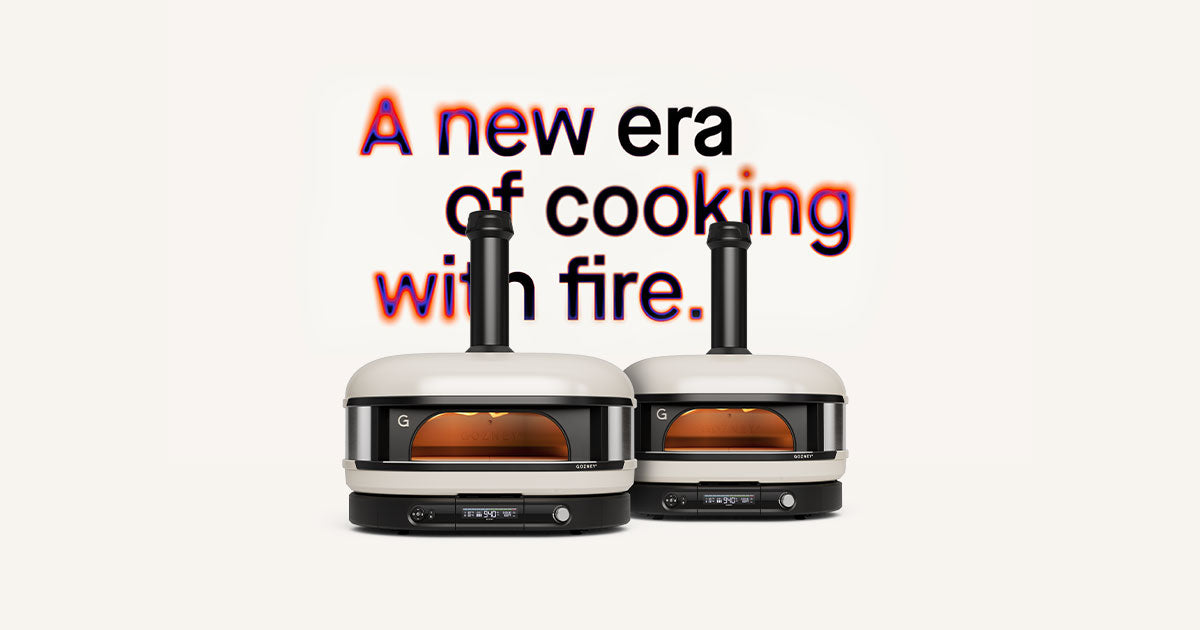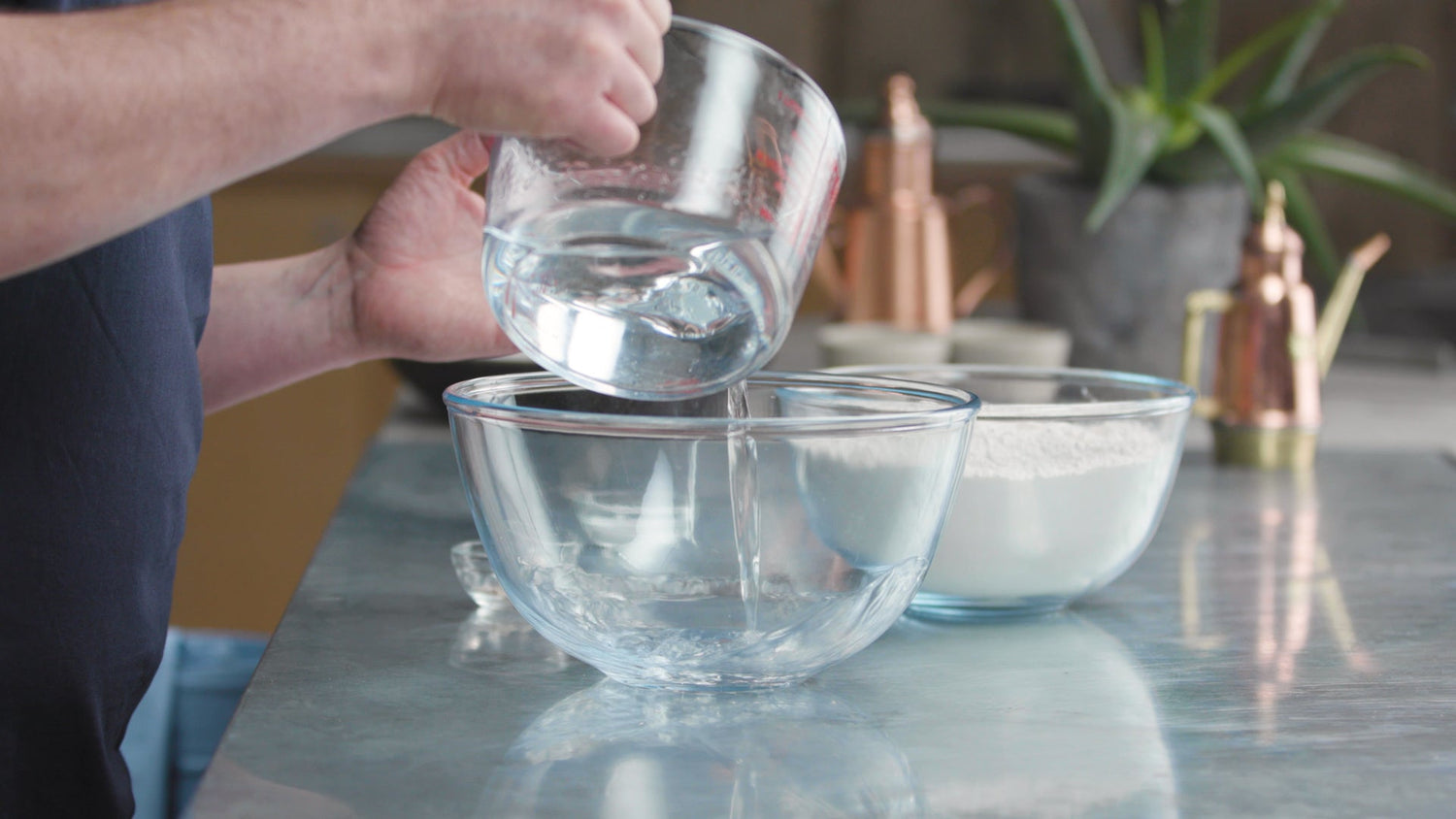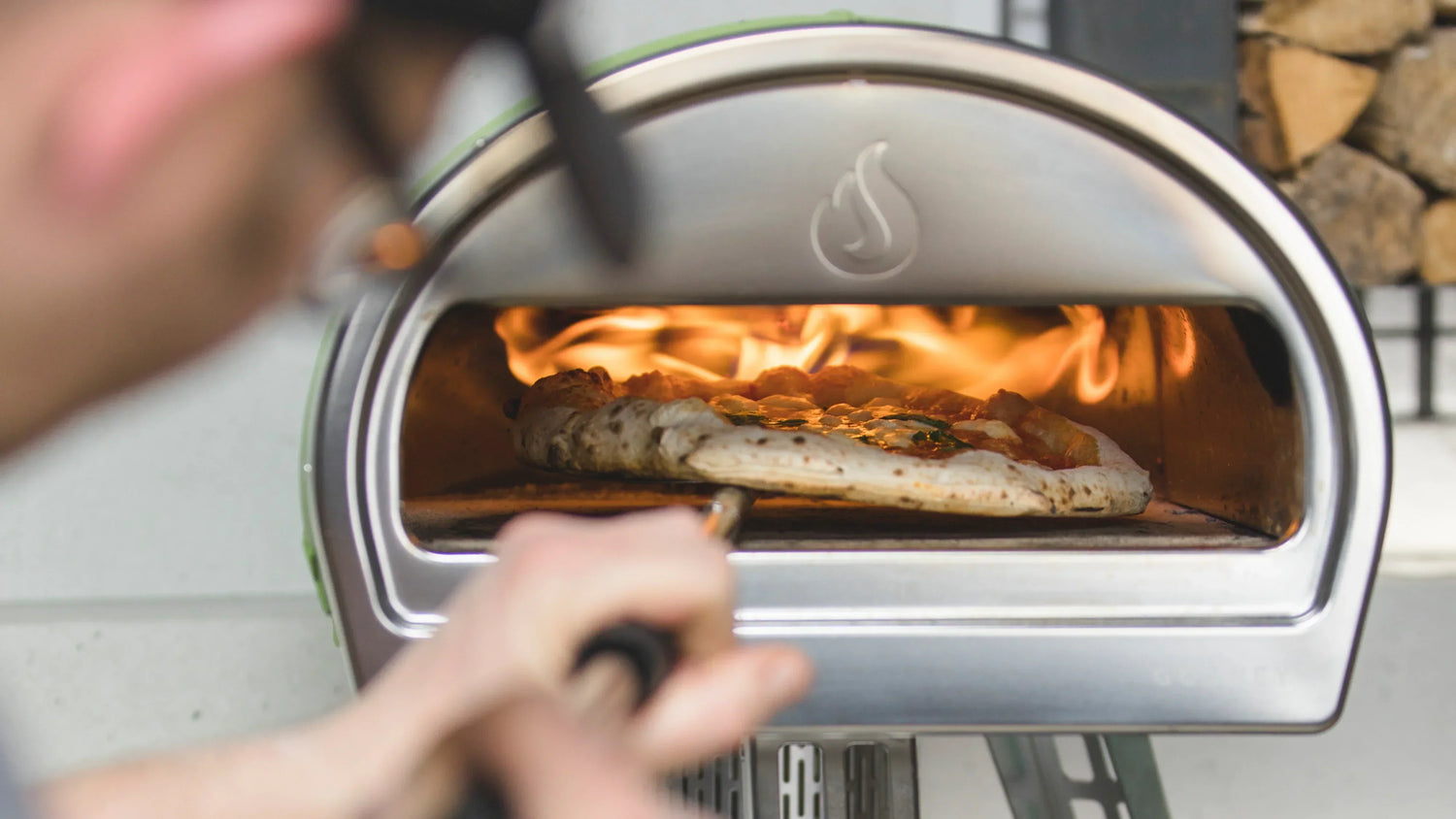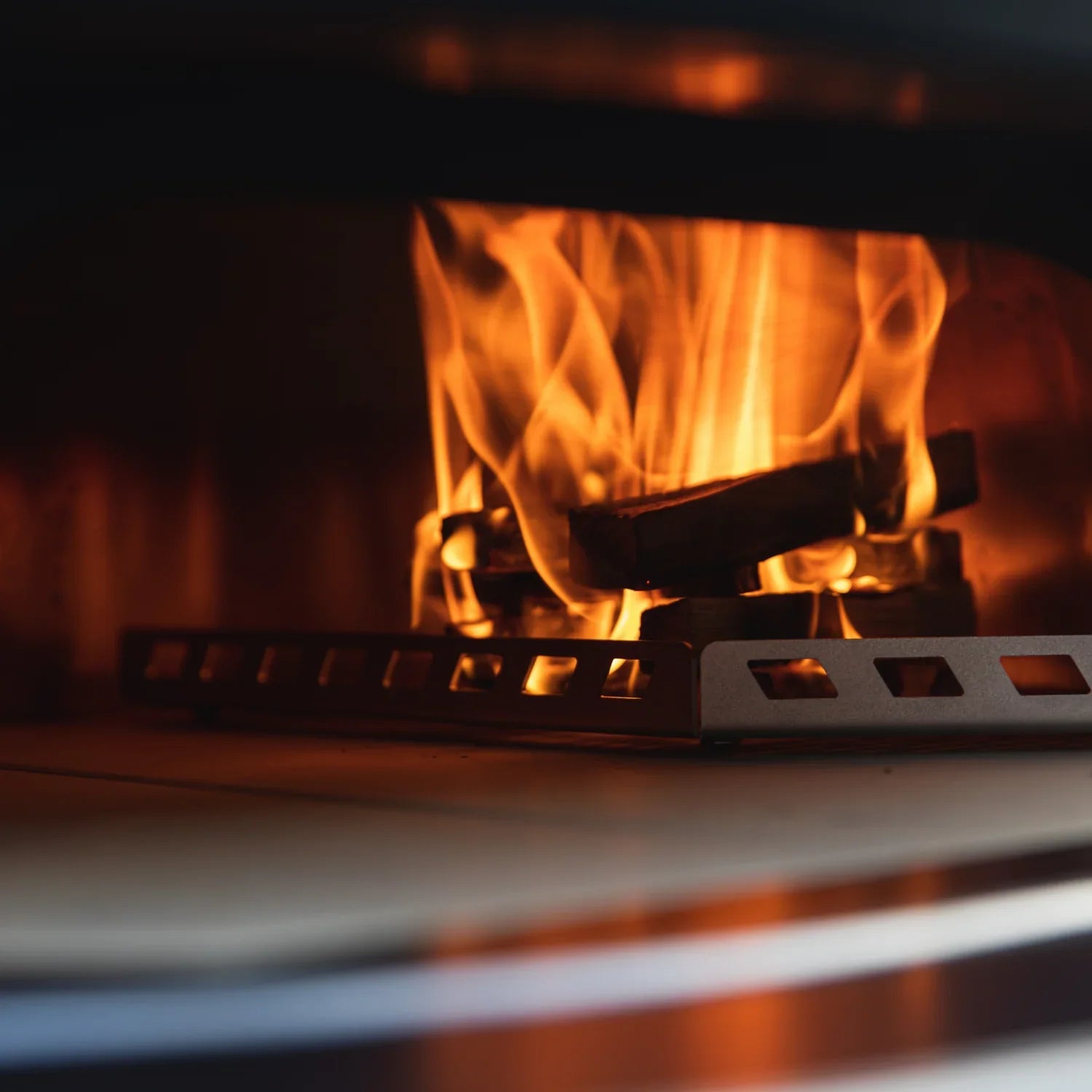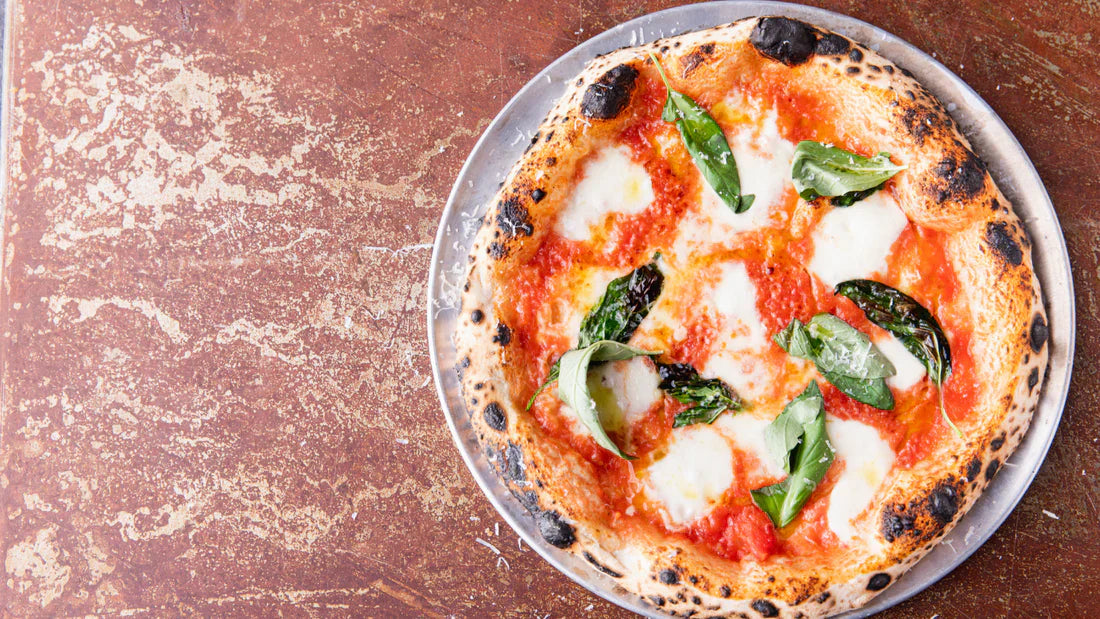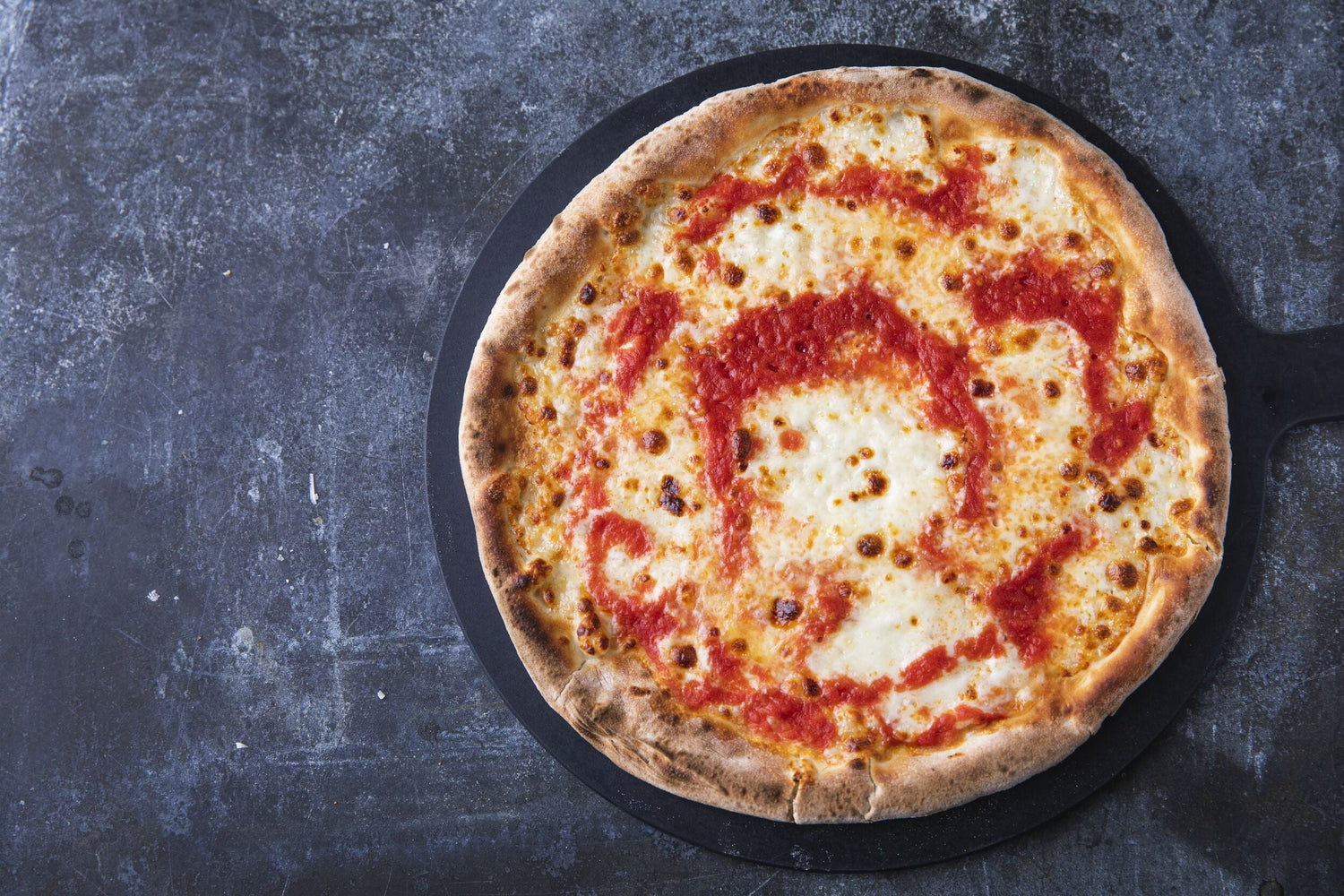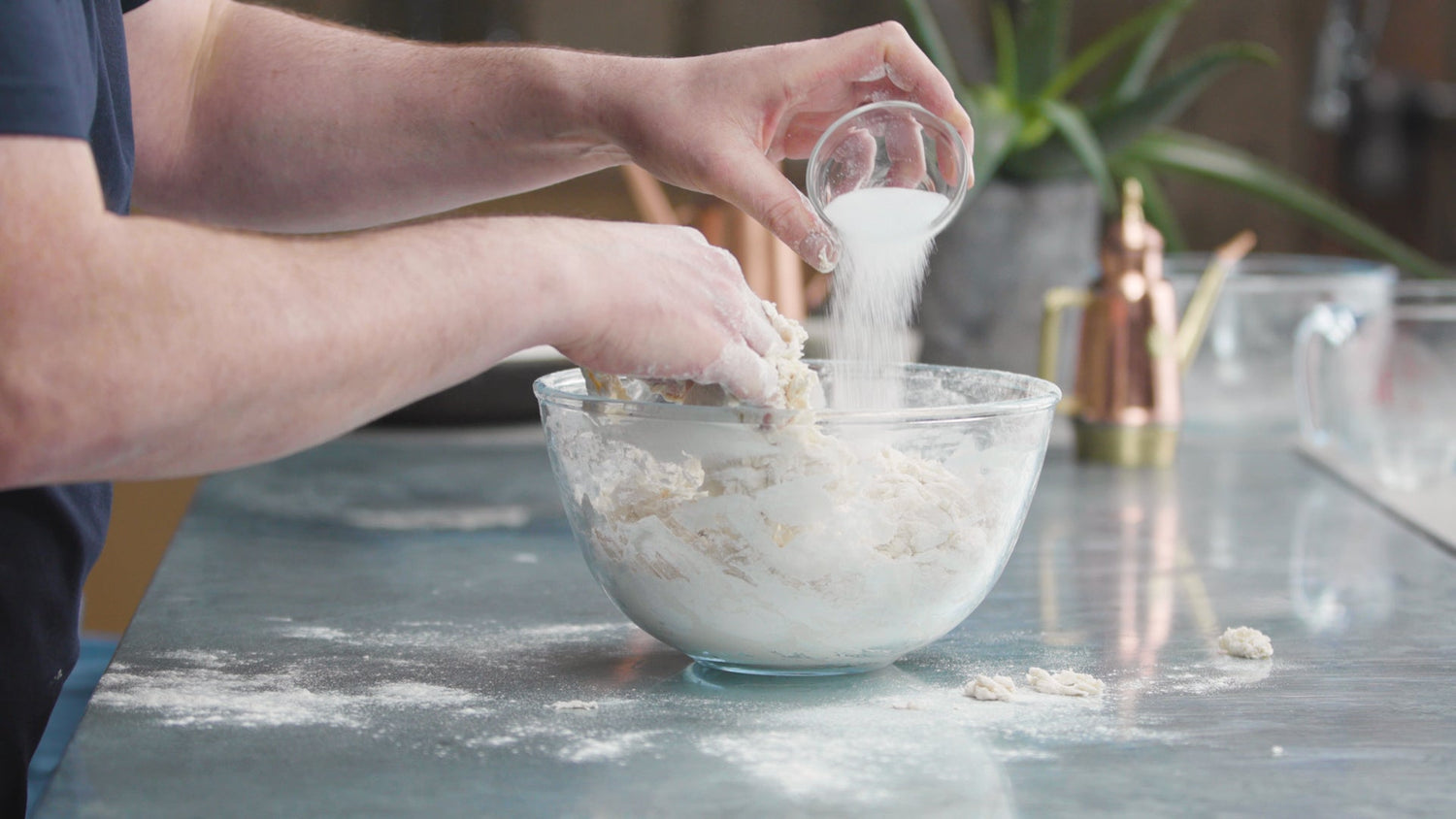An important step towards mastering the art of pizza dough is learning the role of pizza dough hydration, and how it affects the quality of dough. By understanding dough hydration and bakers' percentage, you will be able to make doughs much more consistent and adjust the added water amount to make your favourite dough. This blog covers everything you need to know to master the art of pizza dough hydration.
What is Pizza Dough Hydration?
The hydration of the pizza dough is the amount of water in relatfion to the amount of flour, expressed as percentages. If a dough contains 1000g of flour and 600g of water, it has a hydration of 60%. The hydration will affect the properties of the dough, such as elasticity, stickiness, and rise.
Hydration is usually expressed using baker’s percentages, so to fully understand what dough hydration is, you need to become familiar with these.
What are baker's percentages?
Bakers percentages (also known as baker's math) is a common technique to define the proportions of ingredients in a recipe by defining percentages of ingredients compared to the total amount of flour. While typical recipes will specify the ingredients in volumes, the bakers percentages allow the reader to quickly compare recipes, and scale the recipe by multiplying the proportions.
How to calculate pizza dough hydration
Flour is always stated at 100% and then the other ingredients can be worked out as a percentage of that flour weight. For example, if you have 500g of flour, then you would need 250g/ml of water to have a 50% hydrated dough.
There are good reasons for using baker's percentage for our formulas:

What Is the Best Hydration for Pizza Dough?
The best hydration depends on what properties you’re looking for in your dough, how you want to bake it, and what flour you’re using. There are many factors that affect the dough, so recipe suggestions are just a starting point. You have to experiment to find the optimal hydration level for your dough.
How does hydration affect pizza dough
The hydration level is likely the single factor that affects dough and crust the most. By slightly adjusting the amount of water in relation to the amount of flour, you get a completely different dough. Some of the properties dough hydration effects are:
When you increase the hydration level, it will make the dough stickier and harder to handle. Our pizza dough scraper is a useful tool when you’re working with sticky doughs.
One thing worth mentioning is that it can be challenging to move high hydration, sticky dough from your working surface to the oven because it easily sticks to the peel.
Higher hydration will make the dough rise faster because the extra water will speed up the biochemical reactions of the yeast. In simpler words, the extra water allows the yeast to move more freely throughout the dough, causing a faster rise.
High hydration will also soften the gluten strands, the network of gluten within the dough. This allows larger air pockets to form, something that gives more rise as the dough can hold more gas from the fermentation process.
Larger air pockets will form bubbles, which results in a more open, lighter, softer, and airier pizza crust, which will puff up once your pizza is in your Gozney pizza oven.

Factors That Will Affect Hydration
There are some important factors that are likely to affect the hydration and the overall quality of your dough
Inaccurate measurements
We can’t emphasise enough the importance of measuring your ingredients accurately!

The most efficient way to get accurate measurements is by using a kitchen scale (instead of measuring by volume with a measuring cup) as it’s very difficult to level ingredients like flour, precisely in a measuring cup. In addition, the volume of flour can vary several percentage points, depending on how the single motes of flour are positioned in the cup. This is not the case when you measure by weight, then you know you’ll have the exact same amount of flour every time.
Total amount of flour
Another factor worth mentioning is that the hydration of your dough is the total amount of water compared to flour at the end of the baking process. So, if you use a lot of flour during kneading, you will also be reducing the dough hydration. That is because the amount of flour in the dough has increased, making the percentage of water lower. We recommend measuring all the flour you plan to use beforehand, and not adding any additional flour. This will result in a more consistent dough.
Total amount of water
When dealing with high hydration doughs, such as 70% and beyond, it’s easier to dip your hands in water rather than flour to prevent sticking during kneading. But be aware that using a lot of water when you’re kneading the dough will increase the hydration of the dough.
Humidity level
Another factor to take into consideration is the humidity level in the environment you’re baking pizza. The higher the humidity, the more water the flour will absorb from the air, thus increasing the hydration. You may therefore have to lower the hydration if you live in a very humid place. Likewise, low humidity will decrease hydration, so you may want to add more water to the dough if you live in a dry place.
Altitude
One last factor worth considering is altitude. If you’re baking pizza dough at a high altitude, it is important to increase the hydration of your dough as flour is generally drier at higher altitudes (meaning it will absorb more water).
Popular pizza styles
Ready to test different dough hydration levels? Here are three very popular pizza styles and our hydration suggestion.
Neapolitan style pizza dough hydration

Neapolitan style is known for being very tender, light, and moist at the same time. It cooks for only 90 seconds in a Gozney Dome or Roccbox at 450°C and needs 58-65% hydration.
As the pizza bakes very quickly, not a lot of moisture is evaporated from the dough.
Check out our Neapolitan Style Pizza recipe.
New York style pizza dough hydration

New York style pizza dough usually has a hydration level of around 65%. This is significantly more hydrated than Neapolitan pizza dough due to the longer baking time.
Here is our New York Style Pizza recipe.
Detroit style pizza dough hydration

Detroit-style pizza dough will require a hydration level of around 65%. Similarly to New York style, it needs a longer baking time than the Neapolitan style.
Try our Detroit-Style Pizza recipe.
Pizza styles require different types and amounts of flour. Interested in learning more about pizza making? Have a look at our Best flour for pizza blog.
New to making pizza dough? Do it like a pro with this delicious recipe and your Gozney pizza oven. With a few simple ingredients and easy to follow steps, you'll be balling like the best of them.
